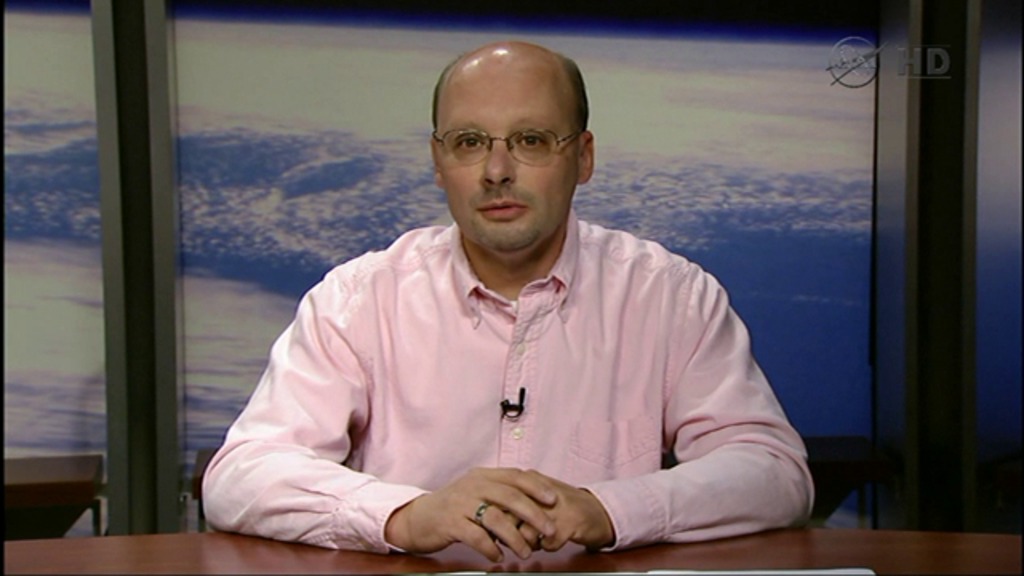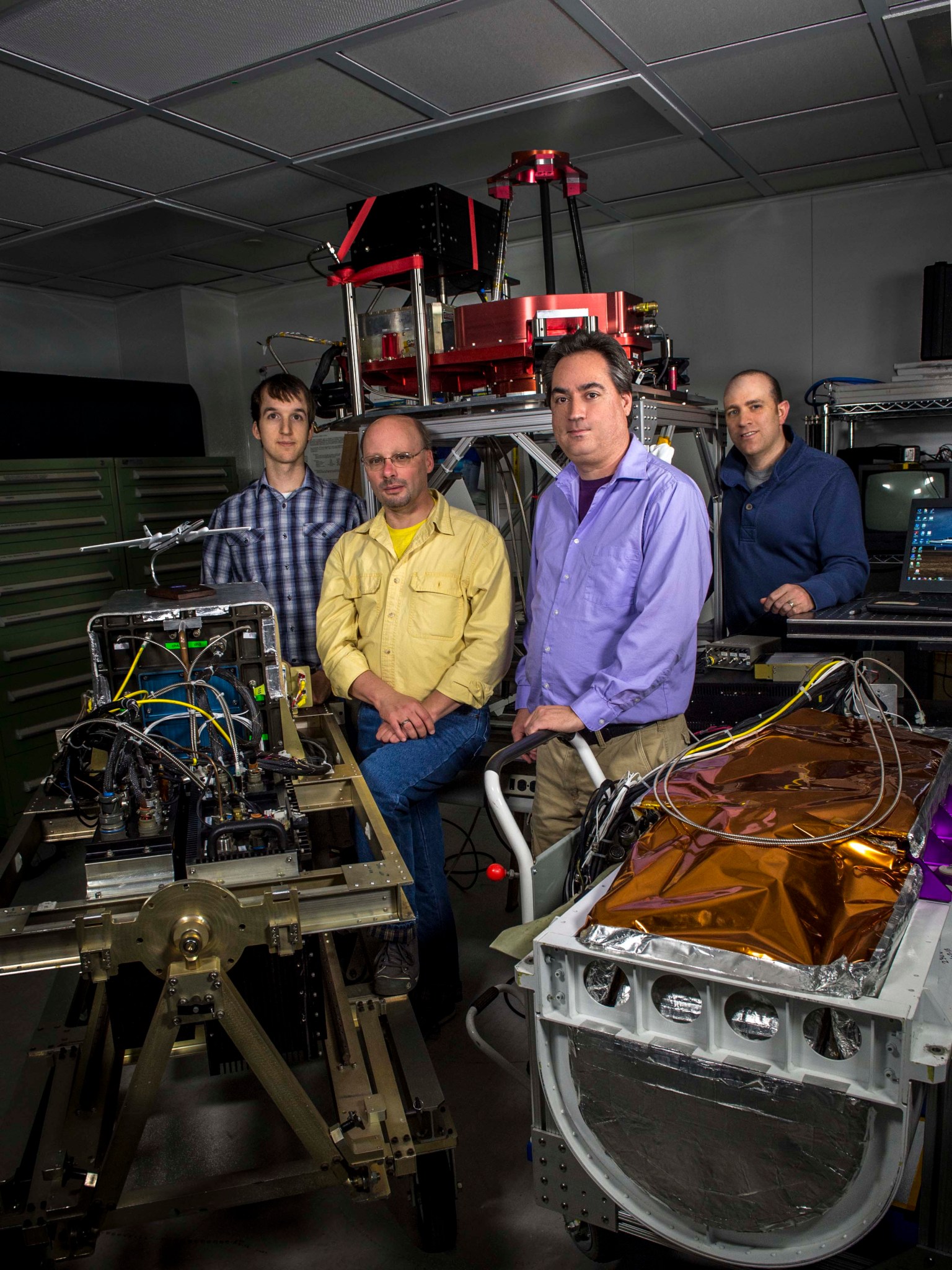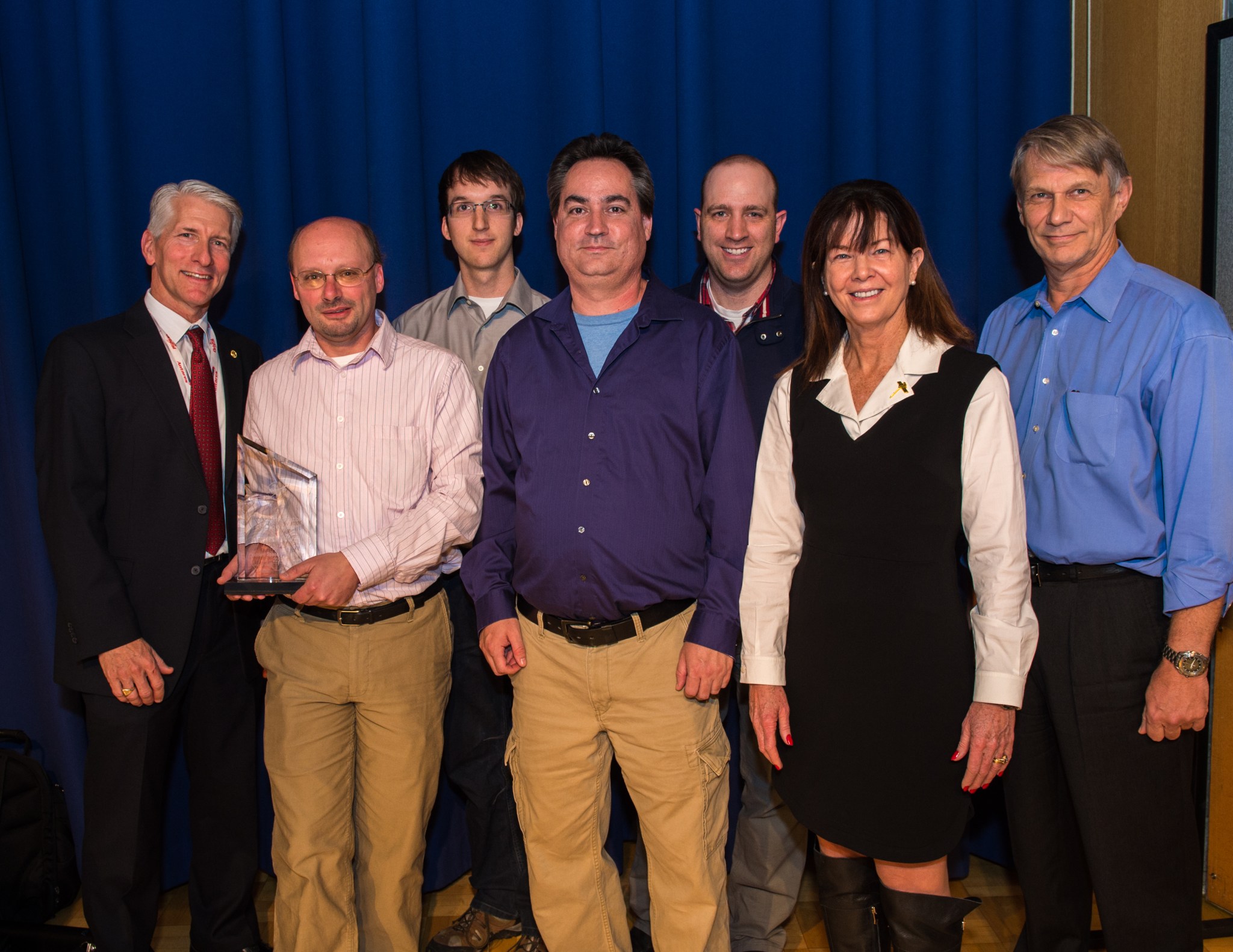
Name: Matthew McGill
Title: Earth Science Division Chief Technologist
Formal Job Classification: Physicist
Organization: Code 610, Laboratory for Atmospheres, Earth Science Division, Sciences and Exploration Directorate
Innovator Matthew McGill is a hybrid – he can build instruments and do science.
What do you do and what is most interesting about your role here at Goddard? How do you help support Goddard’s mission?
I wear two hats. I am a research physicist with focus on studying the atmosphere. I always have multiple things going on covering a lot of ground. I develop new concepts, prototype new instruments, participate in field campaigns, analyze data from instruments and satellites, write proposals, and mentor. We’re currently developing new aircraft instruments and recently completed the new Cloud Aerosol Transport System (CATS), which launched to the International Space Station on Jan. 10, 2015. CATS will provide measurements of clouds and pollutant and prototype new measurement approaches and technologies looking at impacts of climate change.
As the Earth Science Division chief technologist, I advise management on where we should make strategic investments and try to connect the dots between our scientists and engineers to actualize these investments.
What is most exciting about developing new aircraft instruments?
I’m excited about creating the ability to quickly demonstrate new science measurements and new technologies. We’re interested in new measurements about clouds and pollutants. In the grand scheme, our science ultimately feeds back into the topic of climate change.
Our instruments typically fly on the ER-2, a high-altitude research aircraft. We do not fly on the plane, so the instruments must be autonomous, and we can observe the data remotely during flight.

Have you been on many field campaigns?
I’ve been on at least 20 field campaigns over the past 20 years. Our instruments have operated from Costa Rica, South Africa, Iceland and throughout the continental US.
Which was your most memorable field campaign?
Our participation in CRYSTAL-FACE (The Cirrus Regional Study of Tropical Anvils and Cirrus Layers – Florida Area Cirrus Experiment), based out of Florida, allowed us to prototype combined lidar-radar algorithms in days before we had CALIPSO and CloudSat. We were able to connect different sensors to work together to demonstrate enhanced earth observing capability before we had our current NASA A-Train of Earth-observing satellites.
What is the most important lesson you hope to teach those you mentor?
I try to teach them not to be insular. I encourage them to be seen and to make an effort to meet others. Their contributions need to be seen and acknowledged by their future peers and by management to further their careers. I tell them that they are allowed to make mistakes, but I allow them the freedom and encourage them to be out in front presenting results and ideas for the project.
I think the key to successful mentoring is to empower the student, and then trust them. My students always thank me. They are delighted to have such freedom. They use it well and they thrive.
Congratulations on leading the 2014 Internal Research and Development (IRAD) Innovator Team of the Year. Please tell us about this high honor.

I am very pleased and proud to be the lead for the team that received Goddard’s 2014 IRAD Innovator Team of the Year. Peter Hughes, Goddard’s chief technologist, presented our team the award for sustained, long-term development of multiple instruments infusing many strategic investments to attain rapid, low-cost science results.
Our team has been working since 1999 to continuously infuse new technologies into enhancing earth science measurements. This award represents about 17 years of sustained, successful development.
CATS was the most recent of these instruments and probably the most highly visible. Some of our prior instruments which led to this honor include the Cloud Physics Lidar (CPL), the Multiple Altimeter Beam Experimental Lidar (MABEL, a demonstrator for ICESat-2), and an airborne demonstrator version of CATS.
What made your team so successful?
The process was heavily streamlined. I am both the principal investigator and the project manager for CATS. If something needed to be done, I only had to convince myself. I am a hybrid in the Goddard framework. I am able to do the science and I am also able to conceive and build the instruments that provide the scientific data.
I put people on my team who were equally agile. We build aircraft instruments with a small team of four or five people. For CATS, our team had about 12 primary players. One key to our efficiency is that I intentionally keep these teams small because I rely on multi-disciplinary players who can jump in and do whatever needs to be done. Another key is that we have both experienced experts and energetic younger people working together and learning from each other.
Once I had the right people, I trusted them and empowered them and – surprise – they performed.
Was there anything else special about your team?
For CATS, we brought in three high school students whom we hired as full-time employees for a summer. One student helped with optical assembly and testing. Another worked on electronics and programming. The third was involved with mechanical design and assembly. These students brought great capability and tremendous energy to the team. In return, they gained a once-in-a-lifetime experience. They are all college students now.
Is there a process to being innovative?
Innovation means finding creative ways to achieve what you want to achieve, often through nontraditional means. There is a certain logic to being innovative. Don’t be constrained by the perception of barriers. Don’t be beholden to business as usual practices.
Next, you have to fund your idea. Investigate all of the available resources and use all of them. Aggressively pursue internal funding sources like Goddard’s spectacular Internal Research and Development (IRAD) program, external funding sources like the Earth Science Technology Office (ESTO), and agency-mandated funding like the Small Business Innovative Research (SBIR). We’ve funded entire instruments by cobbling together support from all of these sources.
You also need to sell your idea to a customer. Sometimes you need to convince others that your idea is good for them and what they want.
What is your “six-word memoir”? A six-word memoir describes something in just six words.
Innovate, create, conquer and have fun.
Read more Conversations With Goddard
Also read about what our people do Outside Goddard
By Elizabeth M. Jarrell
NASA’s Goddard Space Flight Center

























